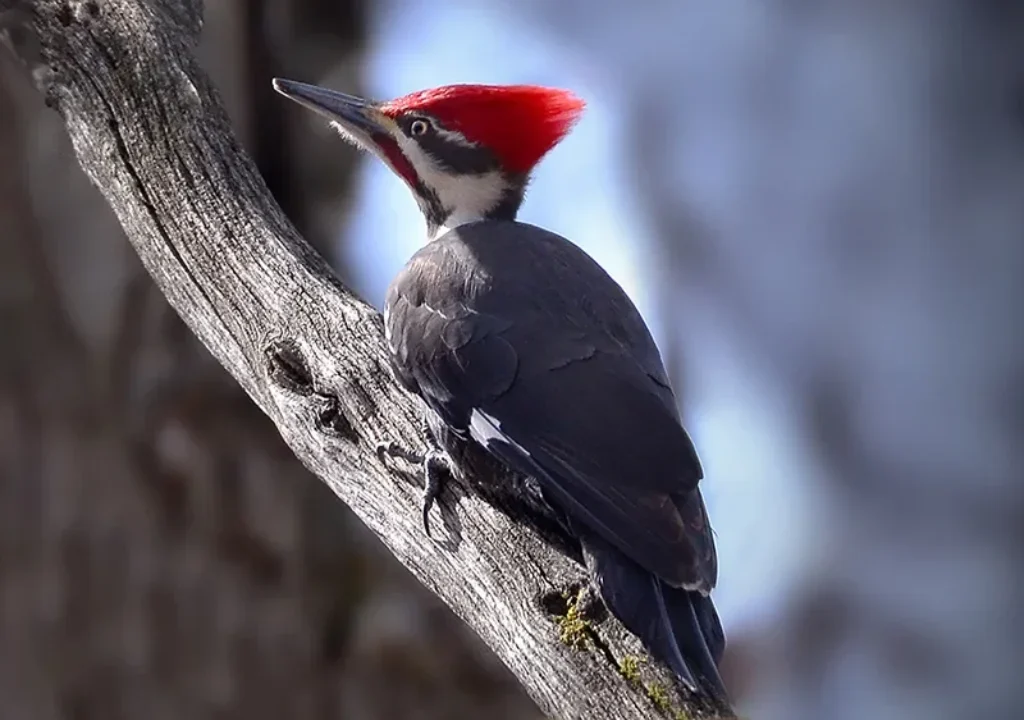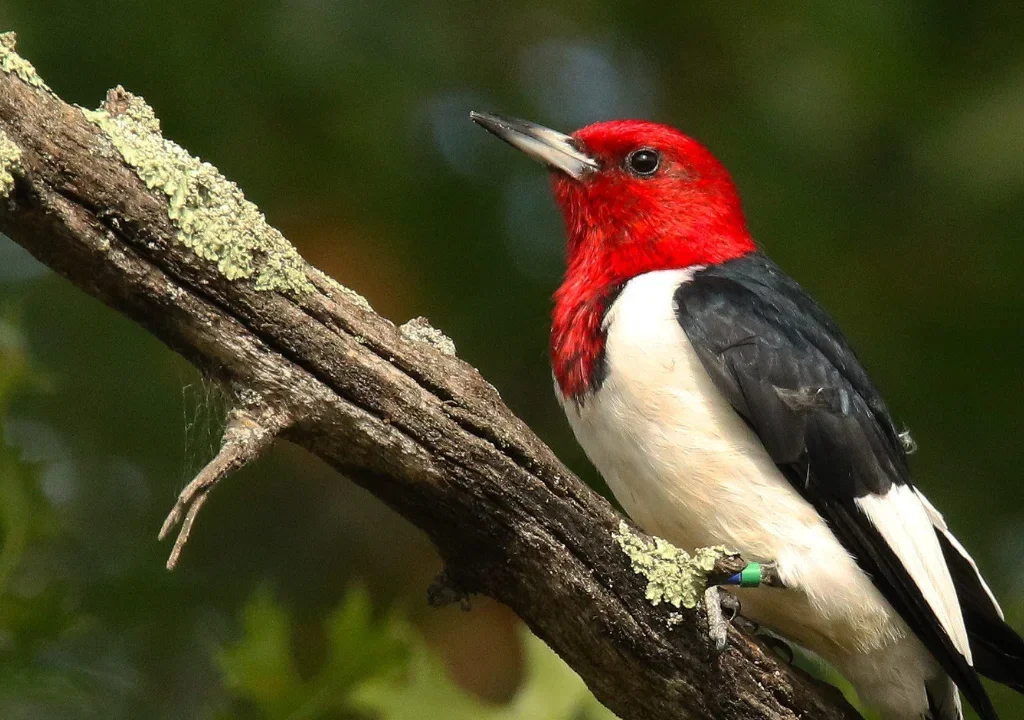
North America’s woodlands echo with the powerful drumming of the giant woodpecker, better known as the Pileated Woodpecker. Towering in size and presence, this striking bird is the largest woodpecker species on the continent. With its blazing red crest and bold black-and-white markings, the Pileated Woodpecker is not only a visual marvel but also an ecological keystone in forest habitats.
Introduction to the Giant Woodpecker
The giant woodpecker, officially known as the Pileated Woodpecker (Dryocopus pileatus), is a symbol of the North American wilderness. This bird commands attention with its size, strength, and loud calls. While often compared to the now-extinct Ivory-billed Woodpecker, the Pileated Woodpecker remains a thriving forest dweller across much of the United States and Canada.
Scientific Classification of the Pileated Woodpecker
- Common Name: Giant Woodpecker / Pileated Woodpecker
- Scientific Name: Dryocopus pileatus
- Family: Picidae
- Order: Piciformes
- Class: Aves
Size and Appearance
The Pileated Woodpecker’s size makes it stand out:
- Length: 40 to 49 cm (16 to 19 in)
- Wingspan: 66 to 75 cm (26 to 30 in)
- Weight: 250–350 g
Distinct features include:
- A flaming red crest atop its head
- A white stripe running down the neck
- A predominantly black body with some white on the wings
- Males have a red stripe on the cheek, while females have a black one
Natural Habitat and Distribution
The giant woodpecker prefers:
- Mature deciduous and mixed forests
- Areas with plenty of dead or dying trees for nesting and feeding
Geographical range:
- Across Canada and the eastern to northwestern United States
- Common in forest preserves, national parks, and suburban woodlots
Foraging and Feeding Behavior
The Pileated Woodpecker is known for:
- Rectangular-shaped holes in dead trees
- Feeding primarily on carpenter ants, wood-boring beetle larvae, and other insects
- Also eating fruits, nuts, and berries when available
- Using its strong beak and long, barbed tongue to extract prey from deep wood tunnels
Nesting Habits
These birds excavate large tree cavities for nesting. Key points:
- Nesting season starts in spring
- Only one brood per year, usually 3–5 eggs
- Both parents share incubation and feeding duties
- Old nest cavities often become homes for owls, bats, and ducks
Unique Drumming and Calls
Pileated Woodpeckers drum loudly to:
- Mark territory
- Attract mates
- Their drumming can be heard from far distances, especially in quiet forests
- Their call sounds like a loud, laughing “cuk-cuk-cuk”
Ecological Importance
These woodpeckers are essential for forest health:
- Control insect populations by feeding on tree pests
- Their abandoned nest holes provide shelter for many animals
- Their excavation encourages tree decay, supporting fungi and invertebrates
Threats and Conservation
While not currently endangered, the species faces:
- Habitat loss from deforestation and land development
- Competition from invasive bird species
Conservation status: Listed as Least Concern by IUCN, but habitat protection is critical.
Interesting Facts About the Giant Woodpecker
- They can live up to 12 years in the wild
- Their hammering can exert forces up to 1,200 g
- They are one of the few species that excavate their own winter roosting cavities
- A group of woodpeckers is called a “descent” or “drumming”
FAQs
Conclusion
The giant woodpecker, or Pileated Woodpecker, is a living testament to the power and beauty of nature. Towering above other woodpeckers in size and strength, it plays a crucial role in forest ecosystems. Whether drumming on trees or soaring through the canopy, the Pileated Woodpecker is truly a feathered giant worth protecting and admiring.
Next time you hear a deep, echoing knock in the forest, it might just be the majestic giant woodpecker at work—keeping the forest alive, one tree at a time.

